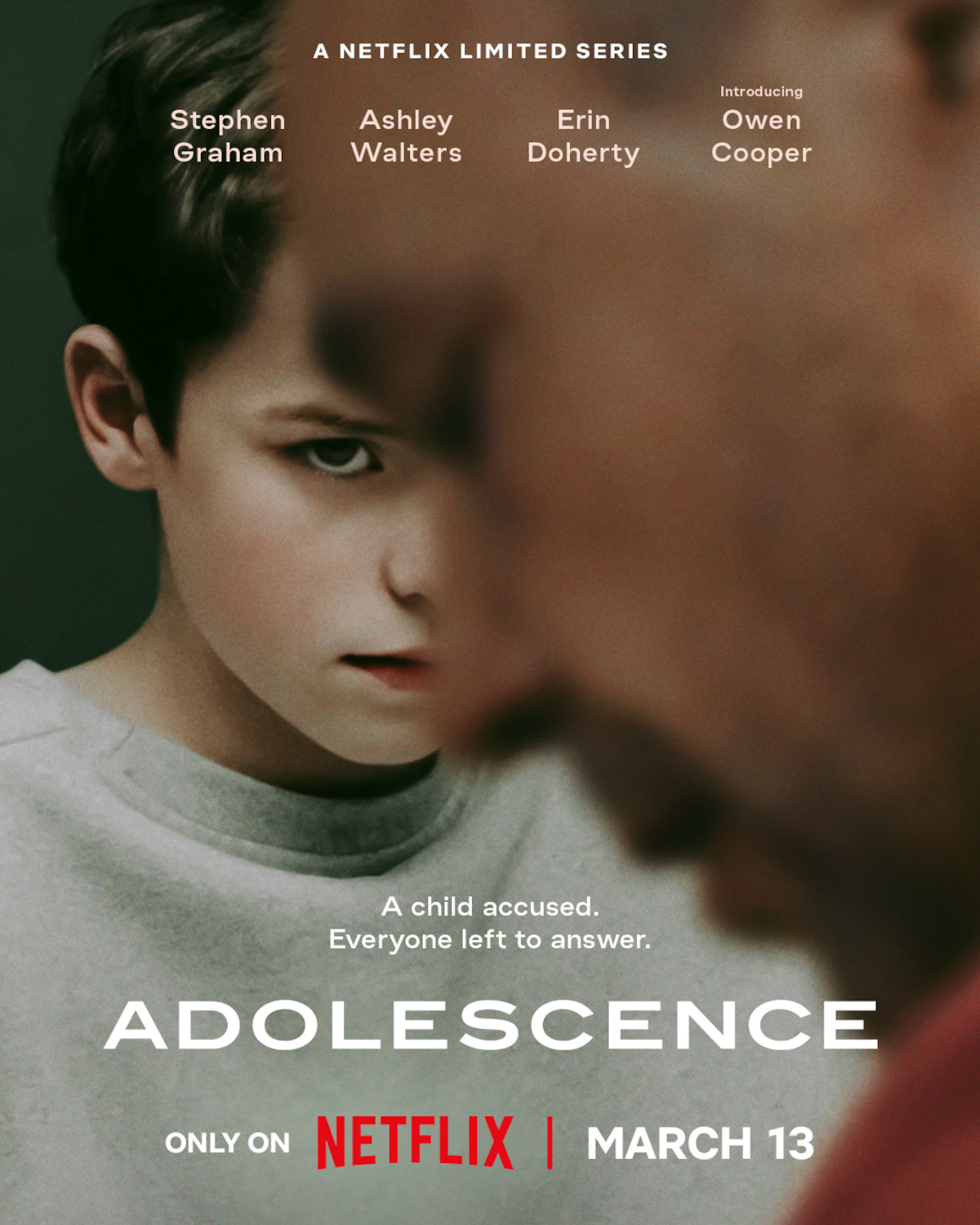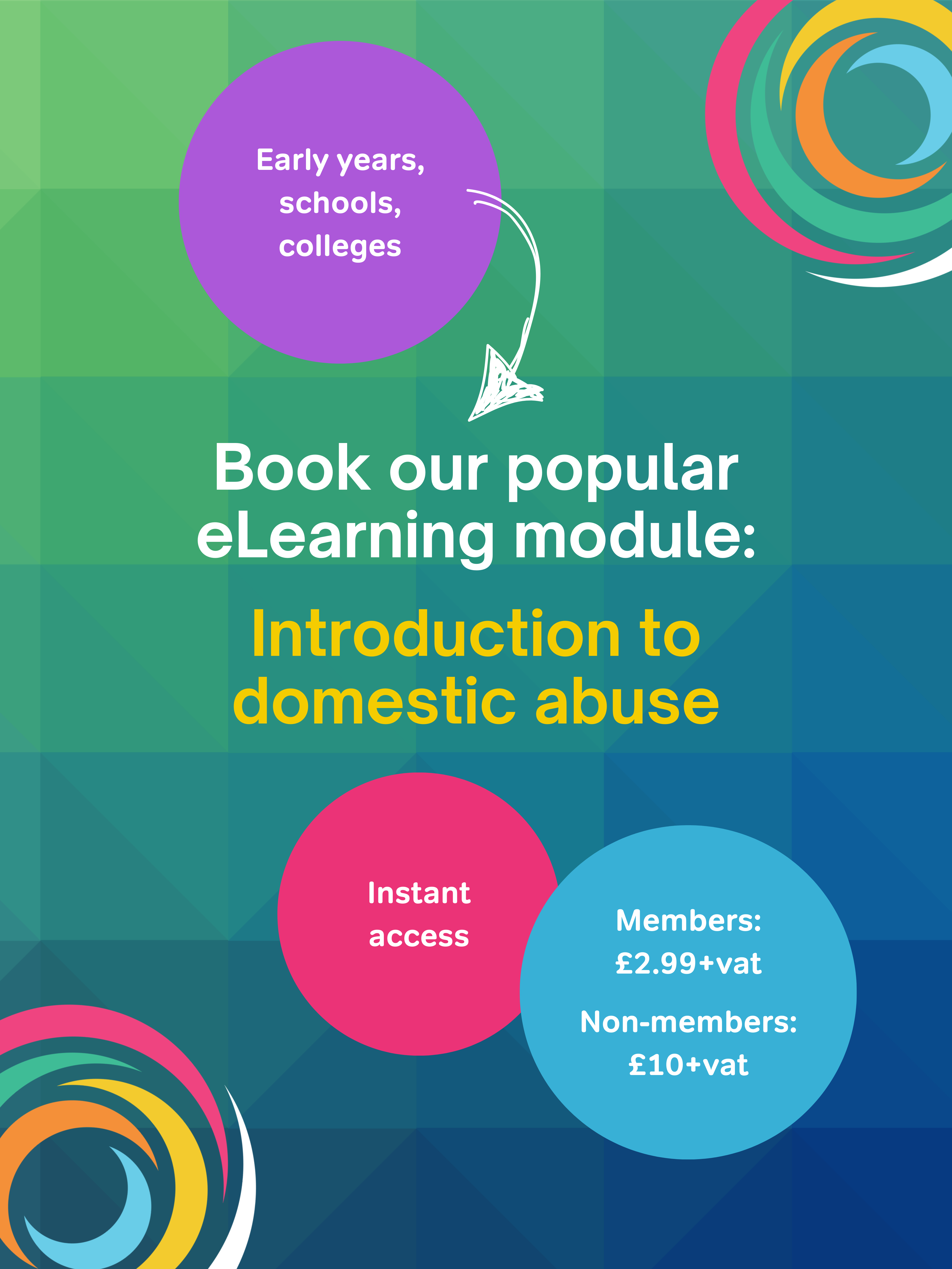
Adolescence
If viewing figures are correct, Adolescence has been seen by a significant proportion of the adult population in the UK. Critics have hailed it as flawless and it has instigated numerous conversations, with the Prime Minister, Kier Starmer entering the debate by backing plans for it to be shown in parliament and schools.
Safeguarding Network's own consultant, Sharon Birch, contributes to the debate stating:
Never mind the superb acting, the innovative direction and filming, this fictionalised account of how one family is turned inside out and upside down by the actions of a 13yr old boy on one ‘ordinary’ school night is phenomenal. It’s got everyone talking. The visual and emotional impacts will be long-lasting. It really strikes hard.
Dramatisation aside (and I am sure there are parts where we have all watched and said to ourselves that's not how it happens in real life), the impact of this four episode drama is undeniable. It addresses issues which as professionals we see every day, across all settings from early years through to further education and everything in-between. Whilst this is nothing new, it offers a unique opportunity in relation to safeguarding - we can use the fact that everyone is talking about the show and will have an opinion to enhance safeguarding knowledge. Ask the question, if that were to happen here, what would we do? How would we respond? Would our staff know who to speak to and how to support children and young people in our care?
Over the coming weeks, Safeguarding Network will be providing relevant updates to help further your knowledge, training materials to help facilitate the discussion and links to other materials that at directly connected to the issues played out in Adolescence.
Responding to the incel ideology
The show makes significant reference to toxic masculinity, incel subculture and the way that this permeates the school environment. But what is the incel subculture, what is the role of online influencers and what can we do to counteract this? This safeguarding insight takes a look into all these issues.

Insights into Toxic Masculinity, Misogyny and Incel
£99+VAT - Members
£149+VAT - Non Members
Join our waiting list and we'll notify you when new dates are added.
Want to know more about toxic masculinity, misogyny and incel?
Education provisions are increasingly concerned about the impact of so-called toxic masculinity , misogyny and in some cases Incel within our learning communities.
This session will explore some of the societal , online and other starting points in relation to the issues and the ways in which education has and continues to address them.
"Safeguarding Network provides an invaluable service to education settings. The high quality training and development opportunities available place designated safeguarding leads in a strong position to fulfil their statutory obligations and further enhance their own safeguarding practice."
Use of language
From emojis to acronyms on the bottom of assignments, children and young people often speak their own language with a view to avoiding the adults around them from understanding what is being said. This is nothing new, we have all played our part in this as children ourselves. However, as with anything related to safeguarding, there is a sinister side, and so as professionals we must try to understand what is going on for children and young people in our care and ensure that if we do hear or see conversations we can help support as necessary. As professionals however we also need to be aware of the language that we use as this can then form opinions and be used as a means of stereotyping the children and young people we work with, potentially influencing our responses to them. This insight looks at both these areas in more detail.
Sexual violence and sexual harassment
As stated above, this is nothing new. The 2021 Ofsted Review of sexual abuse in schools and colleges exposed a significant issue in educational settings across the country. Unfortunately, for many, this was not new information, but served to focus our attention on the issue and how to support staff to address issues of sexual violence and sexual harassment in education settings. As part of our two year cycle of training resources, Safeguarding Network's focus for April 2025 is sexual violence and sexual harassment. Providing our members with a range of materials including
- a PowerPoint presentation covering what sexual violence and sexual harassment are, use of language, consent, vulnerable groups and how to respond.
- presenter notes - notes accompanying each of the slides allowing more information to be added allowing you to provide high quality training to your staff without needing to spend time researching and developing your own training package.
- a one page handout that can be printed and provided to staff covering the key points around sexual violence and sexual harassment.
- a quiz that you can give to staff either before providing training to gauge their knowledge or after the training to evidence assimilation of knowledge. Includes questions such as "how would you define consent". We provide a sheet with suggested answers as well allowing you to check responses.
- scenarios differentiated by setting, covering EFYS, primary, secondary, 16+ / FE, SEND settings and care providers. Each one page scenario provides background information and details a specific incident, asking the staff how they would respond. Each scenario also comes with a DSL information sheet that sets out what Safeguarding Network suggests should happen in response to the incident.
Public sexual harassment
The way children and young people behave and the influences that shape them are by no means limited to the school gates, and education plays only one part in the development of children and young people. The environment in which they live outside school can be just as significant if not more so. It is therefore important that we understand how this may influence them both positively and negatively.
Public sexual harassment (PSH) is a form of gender-based violence which impacts the lives of young people as they navigate physical and online spaces. It is a form of gender-based violence, comprising of unwelcomed and unwanted attention, sexual advances and intimidating behaviour that occurs in public spaces, both in person and online.
Knife Crime
Knife crime is central to the plot of Adolescence, and in a wider, societal context it is rarely out of the news, with the number of offences involving a blade or sharp instrument doubling in the last decade - this in contrast to the wider picture around crime which statistics suggest is falling. There are many reasons why children and young people carry knives, and this insight looks at these, as well as what education settings can do to work with children and young people and keep them safe.

Revised use of reasonable force and other restrictive interventions in schools guidance
The Department for Education is seeking views on the revised ‘Use of reasonable force and other restrictive interventions in schools’ guidance. We consider the revisions, including a statutory requirement to record each incident of use of force and inform parents / carers and putting an emphasis on de-escalation, as well as setting out our thoughts on this vital area here.
The role of the Appropriate Adult
The first episode of Adolescence looks at the process of arrest of the suspect. As he is a child the law requires that the police ensure that there is an appropriate adult present when he is processed in the police station (i.e. read his rights, has his photos and DNA taken and a search completed). In the episode this role is initially undertaken by a professional, however his father then adopts the role of appropriate adult. However, if no family adult family member or suitable member of the community is available, as professionals we may be asked to take on the role of appropriate adult. The role is not one of just standing by and observing, it is about making sure that the suspect's rights are protected and that the suspect understands what is being asked of them. This insight looks at the role of the appropriate adult and what it entails, using the Serious Case Review of Child Q as a base.
Gangs and Youth Violence
Knife crime is often linked (rightly or wrongly) with the prevalence of gangs in an area. Gang membership and associated youth violence can have a devastating impact on children, young people and their families. When does being part of a peer group transition from a normal part of childhood development into a hierarchical structure with rites, status and an association with youth violence? We look at the reasons for joining a gang, what the indicators may be and how to respond, with associated training materials for member settings.
School responses to traumatic incidents
In the second episode of Adolescence, there is a scene where two members of school staff (presumably members of the senior leadership team) are talking about how as a school they are going to manage the fall out. They speak about parents asking if the school is safe and the need to open a "grief support room" with one saying "we're security guards and social workers now are we?"
Responding to traumatic incidents of any nature requires clear planning with consideration given to managing a number of different avenues and groups including pupils, parents, staff and the media. All of these will have different demands at different times, with all their needs being valid. In this insight we look at how you might consider responding to traumatic incidents, what needs to be considered and whether some planning now can mitigate the impact of a traumatic incident should it happen.

Building Support Systems for Bereaved Children
£99+VAT - Members
£149+VAT - Non Members
Building Support Systems for Bereaved Children
92% of children and young people will experience a 'significant' bereavement before the age of 16 and 1 in 25 school age children will have been bereaved of a parent or sibling. (Winston's Wish). Therefore bereavement is, or will be, a significant issue for the majority of children and young people before they leave statutory school age. Schools therefore have a key role to play in providing bereavement support, and yet death remains an issue many of us find uncomfortable, difficult, or even traumatic to talk about. This course offers support, guidance and information about managing bereavement within a school setting.
Coercive and controlling behaviour
A key part of toxic masculinity is coercive and controlling behaviour. Andrew Tate, often seen as one of the leading influencers of young men is known for statements such as women being men's property, hitting and choking ex-partners and stopping them from going out.
The College of Policing set out, “In many relationships, there are occasions when one person makes a decision on behalf of another, or when one partner takes control of a situation and the other has to compromise. The difference in an abusive relationship is that decisions by a dominant partner can become rules that, when broken, lead to consequences for the victim.”
Our training materials on domestic abuse consider coercive and controlling behaviour alongside other elements of domestic abuse.

Introduction to Domestic Abuse eLearning
Using the Domestic Abuse Act 2021 and associated guidance, this online learning course will give users a general introduction to what domestic abuse is and how to respond if you suspect that domestic abuse is taking place.
Everyone who comes into contact with children and their families needs to be aware of the issue, know how to spot the signs and know what to do. Our online eLearning module is designed to provide this basic level of knowledge along with pointers as to what to do next.
"Having the perspectives of the abuser, and the victims was insightful."
Free training materials
We have created a training pack specifically around the issues raised in the series. The pack follows the format of our monthly safeguarding updates with a PowerPoint, presenter notes, quiz (with answers), handout and scenarios. With this pack the scenarios are generic, but focus on the different areas discussed in the training to allow DSLs to understand the level of knowledge in the workforce.
In order to help embed staff learning, build their confidence in safeguarding and really make a difference to students we are giving you access to these materials for free. Click the link below to access the materials.

